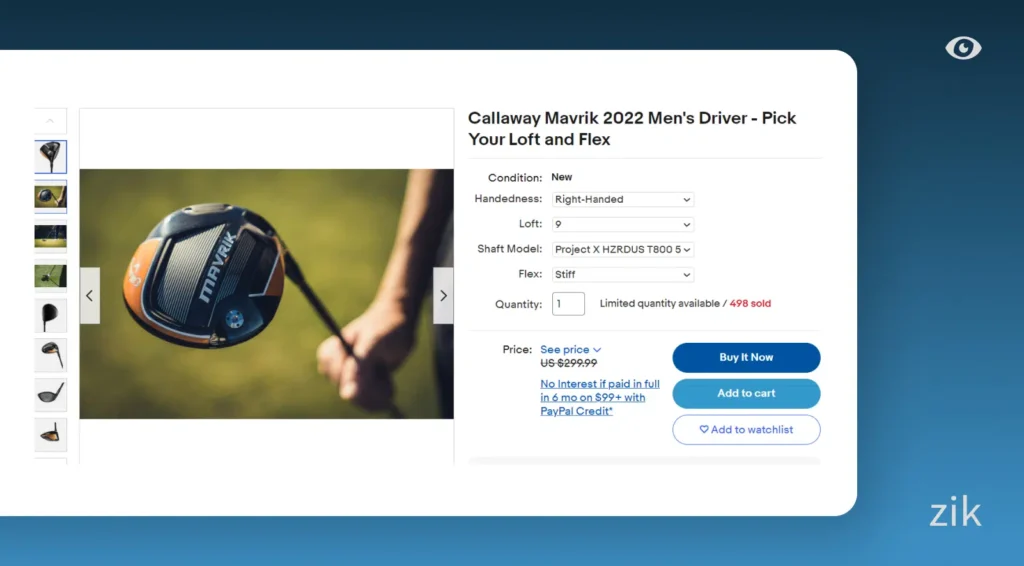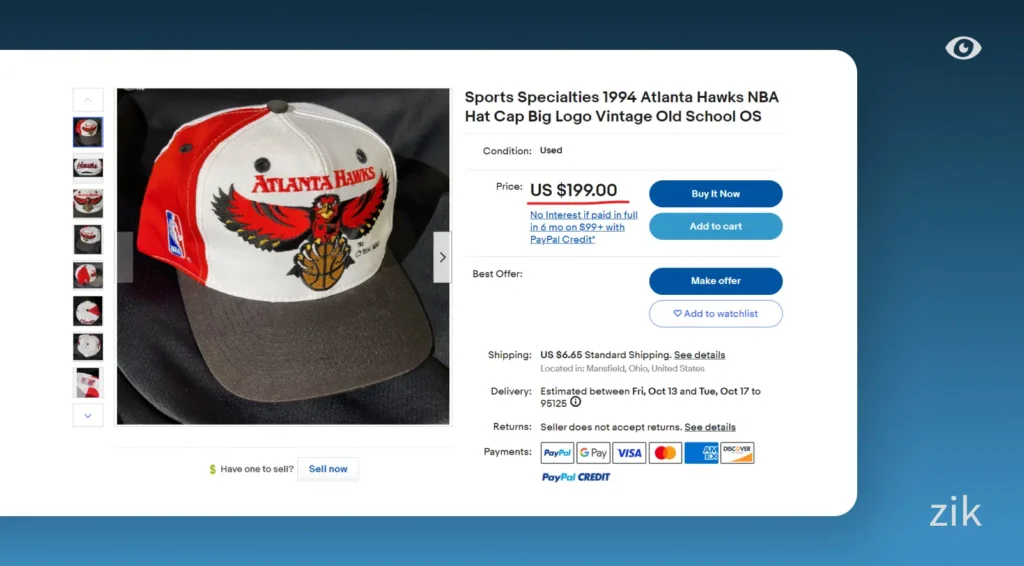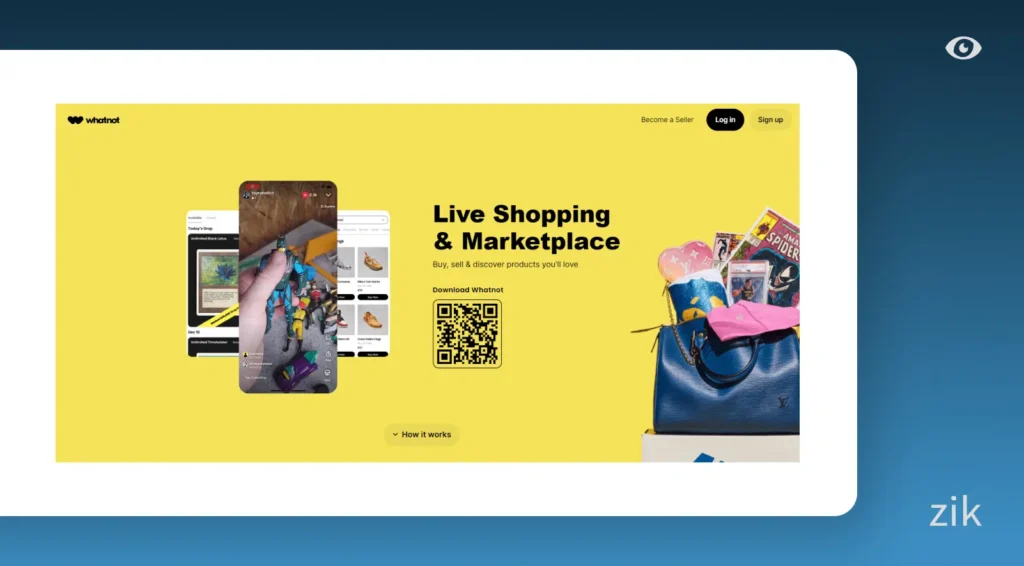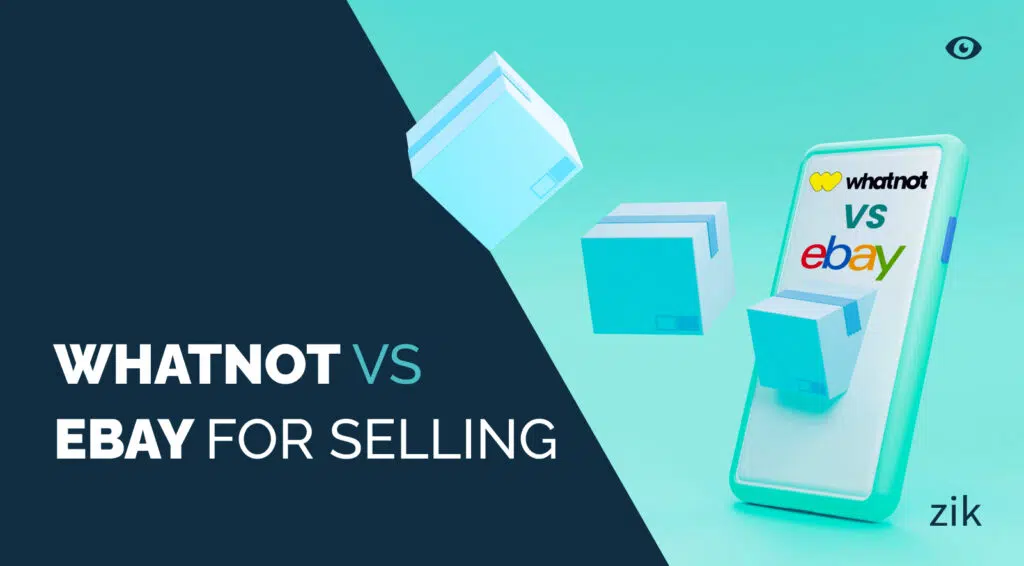You’ve come to the right place if you’re trying to decide between Whatnot vs eBay for selling. Whatnot is a rising online selling platform set to compete with the e-commerce giant eBay.
Whatnot is an excellent platform for sellers who specialize in live interactive selling. But eBay has a solid reputation and a global base that it’s hard to topple.
The choice between these platforms will boil down to your method of selling and your online selling goals.
In the ecommerce industry, eBay reigns supreme. But it’s not the only platform out there. It has had a lot of competitors throughout the years. Since there are already many tools available out there for eBay, the possibilities are also endless, with a lot of eBay products and eBay competitor research tools to enhance your e-commerce business.
One name that’s been making waves in the past few years is WhatNot, a newcomer that has provided a fresh new twist in consumers’ online shopping experience – the live selling capabilities.
But which one should you choose for efficient and profitable selling? Here’s a deep dive into Whatnot and eBay for selling.

eBay – The Giant
eBay Auctions
eBay is undeniably an indomitable name in the online selling industry. With more than 185 million active buyers worldwide, it is the king of online auctions.
For decades, users have been listing items, waiting for bids for days (sometimes weeks), and watching the final seconds of their countdown tick. The auctions are part of the excitement of using this platform, as buyers and sellers participate in the anticipation.
Sellers Need To Make Their Listings Standout

By far, the biggest strength of eBay is its size. As one of the pioneers in the industry, its marketplace has an enormous reach. The number of sellers on the platform means buyers can almost always find what they want. This also means that you and other sellers are in constant competition against each other.
Thus, you need to make their listings stand out. This means it needs good photos, a clear description of the items, and competitive pricing.
Personalized Ads and Promotions
Depending on your settings, eBay collects data from users through cookies. This aims to show personalized ads depending on your past activities on the platform and the internet. This includes your YouTube searches or your general locations.
Personalized content and ads mean your homepage is tailor-fit and curated to your interests and needs, increasing your chances of finding items that may interest you or things you need.
Profitability

Regarding earning profit, eBay has been a proven platform for countless sellers and sellers turned entrepreneurs. From attic treasures like antiques and rare collectible sports cards to used appliances and everyday items, you can make good money on this platform if priced right.
However, there are fees for the convenience, which may eat into your profit margins.
Pros and Cons of eBay Selling
Pros
- Easy-to-use online selling platform
- With a wider reach, more people use and trust their platform
- eBay sales help gain new customers
- Sell anything
- Sellers can list up to 150 products for free
- You Can freely use an eBay competitor research tool to find out what succesful sellers do
The massive user base of eBay is its most significant advantage over Whatnot and any other online selling platform on the web. This means sellers can access millions of active users every month, and is available in 190 countries worldwide.
If you want to ship products overseas or plan to expand your reach in other countries, then this is definitely the platform to go.
Moreover, the platform is praised for the safety of its transactions as it tracks outages and protects buyers and sellers from spam and abuse.
Cons
- You share the platform with more sellers
- You may need to implement competitive pricing strategies for common products
- Sellers have to pay commission fees and eBay subscription plans for professional sellers
eBay runs under tightly enforced rules, such as its return policy, refunds, etc. Sellers will have to operate around these rules. These rules are set in place to protect the users on their platform (both buyers and sellers) and the platform itself, which is a good thing.
Click to download the eBook and master eBay product research for winning items.Whatnot – Introducing Live Selling

Live Auctions – The Bread and Butter Of Whatnot
Unlike most traditional online selling platforms, WhatNot introduces fresh and thrilling energy to live auctions through its live selling feature.
This means that sellers go live to showcase their auctioned items in real-time instead of merely listing their items, be it rare items like limited edition Pokémon cards like Charizards or sports cards like a signed NBA or baseball card.
This means sellers engage directly with their audience for real-time interactions and sales.
WhatNot App Live Selling

Live selling with their app is a smooth and easy process. The interface is intuitive and user-friendly; pair that with their audience engagement and site statistics, and sellers will have the best tools to turn their items into cash.
This feature provides an interactive experience between sellers and buyers, allowing the former to get the best price for their items (as the final sale price can soar through live bidding).
But first, what happens in live selling?
In live selling, sellers set a specific time and date for the audience or would-be buyers to “attend” and watch a sale. Sellers will then go live on video, showing and describing their items.
Live etty much like live auctions online; the fun comes when the bidding starts. Sellers are essentially hosting their mini online show, where sellers with great personalities shine.
But the fun and thrill are not exclusive to sellers. Buyers also have the best chance to witness items live. This means they can interact with their sellers and engage in bidding wars for items they may not find elsewhere.
This made live selling extremely popular in the past couple of years.
People love the interactive nature of videos. With the rise in popularity of video content, such as YouTube and TikTok, the appeal of live selling is hard to notice.
Pros and Cons of Whatnot Liveselling
Pros
- Real-time selling
- Easy way to sell
- Trendy way to sell
- Builds rapport with target buyers
- Fun and interactive experience
- Quick flips mean quick money
- High-volume sales
- Save time with high-volume shipping and low-cost sourcing
- Promote through social media marketing
The biggest advantage of Whatnot is the ability to sell multiple items in one show, and one show could take a couple of hours. This means you can dispose of 20, 30, or even 50 (depending on how effectively you sell your items) in one show.
While you may not be able to fetch top-dollar for most of these items, it’s an excellent way to sell your products without having your money tied to your inventory. People with great personalities and who know their way in front of the camera can sell more.
Cons
- Demands high energy and a good personality to connect with people
- Lower profit per sale
- Selling items lower price than you wanted to
- Requires building your audience through effective marketing
- Scheduled shows are not a passive way to earn profit
Live selling means hosting your own mini-show online. Not everyone can be good in front of the camera. Not everyone has the personality to sell in front of the camera. To be effective, you need charisma and personality to connect to people.
Making Money: WhatNot vs eBay
When it comes to making money, both forms offer plenty of opportunities. However, their approach is a little different from each other.
With eBay, it is about patience. While personalized content and ads can help, you still have to wait for the right buyer to find your listed item to get the best (higher) final price, especially if you sell rare items such as collectibles, memorabilia, etc.
The waiting can take a long time, from days or even weeks. And with their fees, you need to learn to price your items strategically.
However, with Whatnot, online selling creates an engaging environment, allowing sellers to dispose of their items quickly. Even if this could mean selling items lower than your expected final price, the more interested people you have in your live selling, the higher the bidding war can get.
Buyer-Seller Dynamics, Fees, and Shipping Costs
Like other online selling platforms, eBay and Whatnot have their fees that you need to factor in when pricing your items.
Fee Structure
eBay’s Complex Fee Structure
For eBay, its fee structure is quite complex. While they charge you the final value and insertion fees, this can vary based on the type of items you are selling and how you list them.
Additionally, if you want to make your listings more visible (with homepage and tailored ads), they come with a cost, too. Sellers must familiarize themselves with the platform’s fee structure to avoid confusion and surprises.
Whatnot’s Straightforward Fee Structure
Whatnot’s fee structure is pretty easy to understand. They take 8% commissions on all sales. Sellers will have to cover 2.9% plus the $0.30 transaction fee. This fee encompasses the total amount, including the item’s price, tax, and shipping cost.
Shipping
Getting your item checked out by the buyer is one thing; getting those items to your buyers’ doorsteps is another.
eBay Offers Flexible Shipping Options
The ecommerce giant offers a wide selection of shipping options to allow sellers to offer free shipping, calculated shipping, and flat rate shipping based on the general location of the buyer. This gives sellers the flexibility to be informed about the shipping costs, especially for internal shipping.
Whatnote Transparent Shipping
With a strong emphasis on live selling, Whatnot ensures easy and hassle-free shipping for its customers on both sides of the sale. Within the USA, the shipping price depends on the product’s weight and starts at $3.59 and can reach up to $6.78 for items 1lb or less.
They also provide a detailed breakdown of shipping costs for the US, allowing sellers to factor the cost into their prices.
Buyer Engagement
One of the biggest deciding factors for choosing an effective online selling platform is its ability to connect with buyers through personalized content that builds trust.
eBay’s Personalized Touch
eBay uses cookies and data to deliver personalized (age-appropriate if relevant) user experiences and tailored ads based on past activity and search results. This ensures buyers see the exact things they are likely to buy.
For sellers, this means more visibility to their target audience and potential buyers.
Whatnot’s Live Interaction
Whatnot’s unique advantage lies in the real-time interaction from its live selling. Sellers get the best chance to engage with their target audience by answering questions and building a rapport, which is extremely hard to do in statistic listings.
This engagement improves visibility and builds trust among the target audience and potential buyers.
Customer Support
Regarding customer support, both eBay and Whatnot offer dependable support.
eBay Response Can Take Days
eBay’s customer support team is dependable, though they are not as prompt in responding to concerns, especially regarding their live chat support feature.
Whatnot Has A More Responsive Support Team
Whatnot has a more responsive chat support team compared to eBay. But this discrepancy can be attributed to the fact that there are fewer sellers on the platform and thus fewer cases for the customer support team to handle. They also offer personalized support experience by assigning support representatives to handle specific concerns and queries.
Click to download the eBook and master eBay product research for winning items.The Takeaway
You can never go wrong with any of these two online selling platforms. Regardless of your choice, it is essential to note that your online reputation is crucial. You need a positive and consistent image to build a brand to provide quality.
With Whatnot, interactive live selling requires a good personality that will shine through your audience’s screens. This also requires consistency in your presentation, honesty in your description of the products, and a fun and engaging atmosphere in your show.
If you frequently sell live shows, your face will become more familiar on the platform.
With eBay, you need to make your product listing shine. This means you need good product descriptions that interest people to click and check out your product listings. You need good photos, respond to queries promptly, and deliver products fast.
Moreover, you need to maintain high positive feedback from your customers.
All in all, the choice between these platforms boils down to sellers’ preferences. While both have great potential for sales, they lean slightly towards different selling styles and your target audience.
Want to Sell Smarter on eBay?
If you’re leaning toward eBay after this Whatnot vs eBay comparison, let’s make your listings count. Use the ZIK eBay product research tool to uncover what’s trending, what’s profitable, and what your competitors are doing right. It’s the fastest way to scale your eBay store with real data—no guesswork, just smarter selling.
Frequently Asked Questions on Whatnot vs eBay
Here are some frequently asked questions on eBay Whatnot vs eBay:
What is better, eBay or Whatnot?
eBay is better for global reach, structured listings, and buyer protections, though fees are higher. Whatnot works well for live-stream sales, faster turnover, and lower fees, but has a smaller, mostly U.S. audience. The better option depends on your products and selling style.
What are the pros & cons of Whatnot?
Pros include simple fees, fast sales through live auctions, strong buyer engagement, and community building for repeat customers. Cons include a smaller audience than eBay, reliance on hosting skills, potentially lower prices for inexperienced sellers, and limited protections compared to established marketplaces.
Why are so many people leaving eBay?
Many sellers leave eBay due to rising fees, complicated payment structures, and strict buyer-friendly policies. Delayed payouts, mandatory shipping rules, and weak seller support add frustration. With new international trade costs and better alternatives available, sellers often find other platforms more profitable.
Who is eBay’s biggest competitor?
Amazon is eBay’s primary global rival, offering greater scale, reach, and seller tools. Other platforms like Walmart Marketplace and Etsy also present competition, depending on the seller’s niche. Amazon stands out as eBay’s biggest competitor due to its dominance in volume, audience, and seller infrastructure.
Whatnot to sell on Whatnot?
Hot sellers include collectibles (trading cards, action figures), toys (Funko Pops, LEGO), vintage/retro fashion, limited-edition sneakers, and garden tools (like grow lights). Items that leverage nostalgia, exclusivity, or passionate communities—paired with live show energy- perform especially well on Whatnot.
How much does Whatnot take per sale?
Whatnot charges sellers an 8% commission on the item’s final sale price, plus a payment-processing fee of 2.9% + $0.30 per transaction, calculated on the total buyer payment (item, shipping, tax). Reduced commissions (4–5%) apply to specific categories
Want to know about some other platforms that you can sell on other than eBay?
eBay VS:
- AliExpress
- Amazon
- Bonanza
- Craigslist
- Depop
- eBid
- Etsy
- Facebook Marketplace
- Goat
- Gumtree
- Mercari
- Poshmark
- Vinted
- Stockx
- Truegether
- Wish













